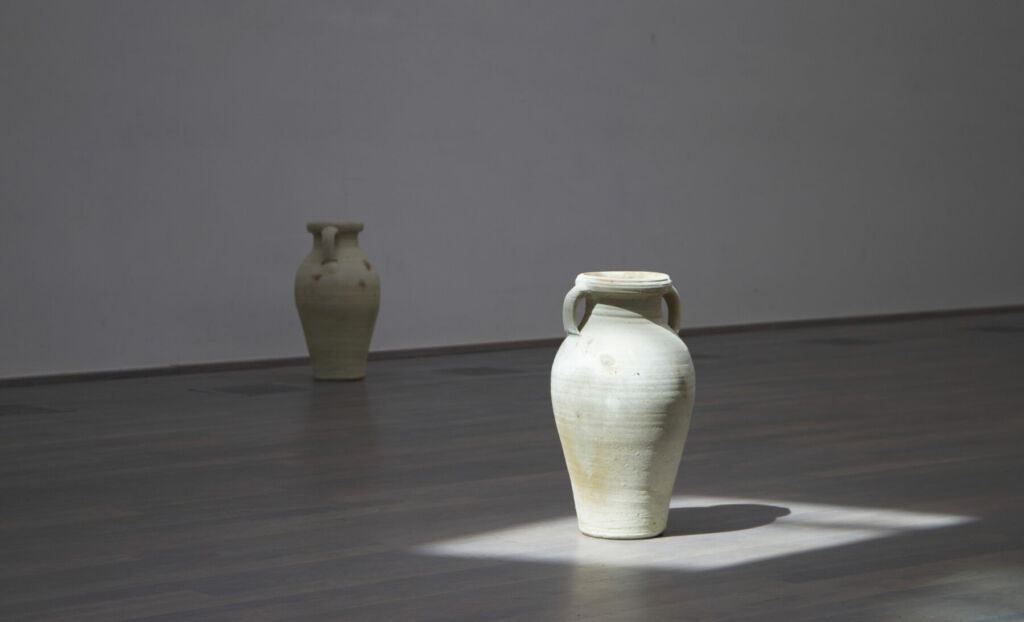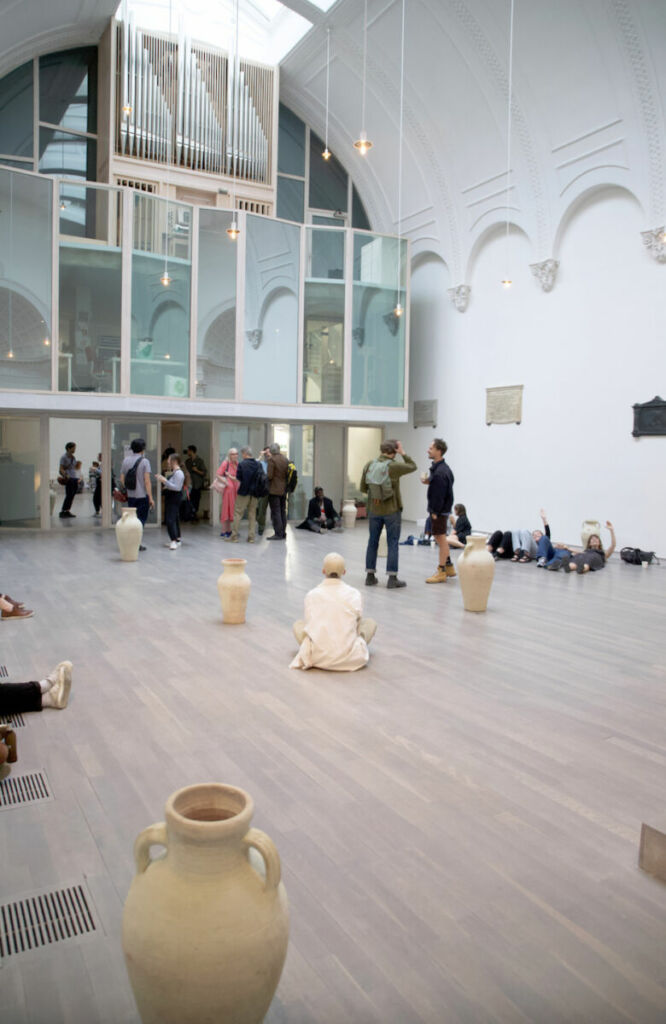Text by Martyn Riley

To create a piece or an experience that lasts, that affects an individual, or at the very least, to make a person hit the metaphorical pause button, can be a rare occurrence, if only for a short period and certainly a challenge for any artist. Caving, a recent sound installation at The Swiss Church by the DDS collective, from the visitors’ engagements certainly showed evidence of this.
DDS are a trio of sound artists and experimental musicians whose practices research a multiplicity of areas. For Elliot Buchanan, interrelationality and the emergence of plural knowledges through a lens of a sonic metaphysics. Ben Harrison enquirers spatiotemporal possibilities of sound and locational histories. For Martyn Riley is investigating the sound-triggers of memory and their relations found in physical objects and histories.
Since 1855 The Swiss Church has been hidden behind towering trees lining Endell Street in Soho. Walk past it and you would miss it. On entry to the contemporary plain monochrome interior, people are often blown away, with huge skylights creating never-ending palates of light and it’s imposing lustrous tin piped Späth organ. A light and space quite rare in central London.
For a couple of decades, it’s been quietly operating at the forefront of introducing emerging and established international artists to diverse audiences. Be it their successful ‘Artist in Residence’ series or decade-long relationship with Goldsmith’s Curatorial programme bringing in artists such as Marguerite Humeau, who made such an impression recently with her multi-faceted exhibition meys.
Sculptural and visual arts, whilst engaging on social issues and involving community, have often been the norm here. So, a regular annual commitment to exhibitions where sound is a focus creates a new venture for the in-house curators. This new relationship is with the MA Sound Arts programme at UAL, a campus that includes the highly regarded CRiSAP (Creative Research into Sound Arts Practice).
Along with an interest in the unknowable and uncanny, one sound element that bonds DDS ideas together is of the spatial, an oft-overused ‘go to’ term for Sound Artists. However, not always referring to surround sound systems and the expansive multi-speaker configurations that can be found in venues such as Iklectik with the Amoenus 13:4 System or GRM in Paris. I refer to the space between, a space listeners navigate within and how the sound responds to both the source and its relationship to surface(s), non-human or human.
Scores were created for vocalists to guide, attune, and respond to; however, Caving would not be considered as composed. Although taking Pauline Oliveros’s thoughts with a field of sound being a ‘grand composition’, one could suggest of a continuous composition existing. A melding act of listening, the beating frequencies, constant changes in sonic dynamics by the presence and movements of humans within the space, not neglecting the everchanging light. All these elements create unrepeatable moments taking place.


The piece, with its mix of research, created the historical, scientific and the transcendental. The concept, from the outset, focussed on archeoacoustic histories of resonance and how the relationship of sound and space could allow an access to the divine.
The installation was conceived as a negotiation between acoustic properties of the building and resonant frequencies it possessed, harnessing these complex harmonies and resonant entanglements. The installation drew on archeoacoustic research and the ancient echea, or acoustic vases; vessels set within walls and ceilings of amphitheatres and sacred spaces, altering and, by design, enhancing acoustics.
Utilising the science of extracting sonic information connected to the resonant frequencies, the artists identified and experienced standing waves that many acoustic engineers attempt to eradicate. Once the readings were calibrated, they were used as a basis for the ‘score’. The space was therefore activated by the inter-play of these frequencies and any mild fluctuations or slight mismatches of sounds would create an almost over-powering experience of a beating frequency.
The score, a mixture of long tones and freeform extended notes, was created based on values corresponding to these readings. The imperative was the varied experience between the eight vocalists found for the recordings. From experimental freeform performers with experience of extended vocalising to the more professional and trained artists used to performing to thousands and those with an untapped natural talent and individual tonality.
Each of the carefully sourced hand-made vases, or vessels, intrinsically became the vocalist, and visa versa. Caving became a never-ending randomised piece which would never be the same in an incalculable period due to the vessels being of a sonically standalone and randomised playback nature. An additional sonic source, and to exhibition visitors, a mysterious one, emanated from beneath the floors; sine waves via the underfloor vents and subwoofers throbbing intermittently and disappearing slowly.
Throughout the exhibition, there was a wide mix of reactions and responses from a refreshingly diverse crowd. From tourists to parishioners, artists to local residents and workers to the homeless (a shelter is located close by).
Due to the doors opening out into the busy Soho environment, there was noticeably an exchange between this and the main interior exhibition space. A liminal space where both these environments overlapped, and often by encountering the sounds outside, people were drawn in from busy jostling streets. Many sat immediately and listened intently for long periods, some lay on the floor, and others wandered, peering into the darkness of the sizeable vases discovering the different layering of sound encountered between each vessel. Each vase often fell silent, and no period was the same.
The simple aesthetics of the installation shouldn’t be downplayed, as all that was seen were eight large vases in an empty, naturally lit interior, and repeated comments were received on how it looked like the vases had been there ‘forever’.
This simplicity and uncluttered presentation often assisted people to have quite personal and transcending experiences from their feedback. How they instinctively started to sing or harmonise. Some were said to be tearful and emotional in response to the mutually effective-sounding space. It was not lost on some that they each altered the sound with their own presence; they became a willing human accompaniment to the non-human.






